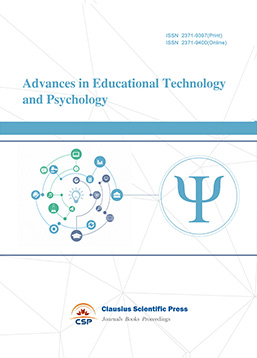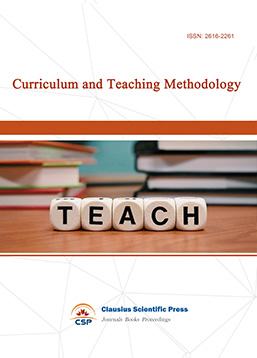The Intervention of Dance Movement Therapy Combined Developmental Transformation Drama Therapy on Burnout and Caring Ability of Psychiatric Nurses
DOI: 10.23977/appep.2025.060204 | Downloads: 19 | Views: 652
Author(s)
Qu Han 1, Azni Yati Binti Kamaruddin 1, Liu Xiaolin 2, Zhao Yining 3
Affiliation(s)
1 Faculty of Education, University of Malaya, Kuala Lumpur, Malaysia
2 Chongqing Mental Health Center, Chongqing, China
3 Chunyang Experimental School, Wuxi, China
Corresponding Author
Azni Yati Binti KamaruddinABSTRACT
This study examined the effectiveness of dance movement therapy combined with developmental transformation drama therapy on burnout and caring abilitis of psychiatric nurses. 120 psychiatric nurses were selected and randomly divided into experimental group and control group. Then the experimental group received 12-week intervention training. The results show that the total burnout score and emotional exhaustion and low personal accomplishment scores of experimental group were significantly lower than those of the pre-intervention and control group, the scores of depersonalization dimension was no significant difference, and the scores of participants' caring ability and three dimensions of cognitive, courage, and patience in the experimental group were significantly higher than those in the pre-intervention and control group. It is proved that dance movement therapy combined with developmental transformation drama therapy can effectively alleviate psychiatric nurses' burnout and enhance their caring abilities.
KEYWORDS
Dance Movement Therapy, Developmental Transformation Drama Therapy, Burnout, Caring Ability, Psychiatic NursesCITE THIS PAPER
Qu Han, Azni Yati Binti Kamaruddin, Liu Xiaolin, Zhao Yining, The Intervention of Dance Movement Therapy Combined Developmental Transformation Drama Therapy on Burnout and Caring Ability of Psychiatric Nurses. Applied & Educational Psychology (2025) Vol. 6: 27-36. DOI: http://dx.doi.org/10.23977/appep.2025.060204.
REFERENCES
[1] Kärkkäinen, R., Saaranen, T., & Räsänen, K. (2019). Occupational health care return-to-work practices for workers with job burnout. Scandinavian Journal of Occupational Therapy, 26(3), 194-204.
[2] Hilton, N. Z., Ham, E., Rodrigues, N. C., Kirsh, B., Chapovalov, O., & Seto, M. C. (2020). Contribution of critical events and chronic stressors to PTSD symptoms among psychiatric workers. Psychiatric Services, 71(3), 221-227.
[3] Wang, Y., Hu, S.Y., & Chen, Y. (2018). Qualitative study on the situational perception of negative emotion produced by psychiatric nurses under the guidance of Belk situation theory. Journal of Nurses Training, 38(7), 658-662.
[4] Zhang, L., Li, M., Yang, Y., Xia, L., Min, K., Liu, T., Liu, Y., Kaslow, N.J., Liu, D.Y., Tang, Y.L., Jiang, F., & Liu, H. (2022). Gender differences in the experience of burnout and its correlates among Chinese psychiatric nurses during the COVID-19 pandemic: A large-sample nationwide survey. International Journal of Mental Health Nursing, 31 (6), 1480-1491.
[5] Tang, Y., Wang, Y., Zhou, H., Wang, J., Zhang, R., & Lu, Q. (2023). The relationship between psychiatric nurses’ perceived organizational support and job burnout: Mediating role of psychological capital. Frontiers in Psychology, 14, 1099687.
[6] Thompson, E., Senek, M., & Ryan, T. (2024). Analysis of a nursing survey: reasons for compromised quality of care in inpatient mental health wards. International Journal of Mental Health Nursing, 33(1), 52-61.
[7] ADTA. (2022). What is dance/movement therapy? ADTA. https://www.adta.org
[8] Champagne, E. R., & MacDonald, S. E. (2022). The perceived benefits of Dance Movement Therapy for parents of a child on the autism spectrum: A pilot study. The Arts in Psychotherapy, 77, 101875.
[9] Champagne, E. R. (2024). Caregiver Resilience and Dance/Movement Therapy: A Theoretical Review and Conceptual Model. Journal of Applied Gerontology, 43(3), 319-327.
[10] Sajnani, N., Willemsen, M., & Butler, J. D. (2023). A scoping review of observed benefits of Developmental Transformations (DvT). Drama Therapy Review, 9(2), 273-315.
[11] Johnson, D. R., & Pitre, R. (2021). Developmental Transformations. In D. R. Johnson & R. Emunah (Eds.), Current approaches in drama therapy (3rd ed., pp. 123–161). Charles C. Thomas.
[12] Li, C. P., & Shi, K. (2003). The influence of distributive justice and procedural justice on job burnout. Acta Psychologica Sinica, 35(5), 677-684.
[13] Xu, J.(2008). Investigation on caring ability of hospital nursing staff. Wuhan: HUST (Huazhong University of Science and Technology).
[14] Taylor, J., Stratton, E., McLean, L., Richards, B., & Glozier, N. (2022). How junior doctors perceive personalised yoga and group exercise in the management of occupational and traumatic stressors. Postgraduate Medical Journal, 98(1161), e10.
[15] Nilsen, M., Stalsberg, R., Sand, K., Haugan, G., & Reidunsdatter, R. J. (2021). Meaning making for psychological adjustment and quality of life in older long-term breast cancer survivors. Frontiers in Psychology, 12, 734198.
[16] Wang, Q., Luan, Y., Liu, D., Dai, J., Wang, H., Zhang, Y., & Bi, H. (2024). Guided self-help mindfulness-based intervention for increasing psychological resilience and reduce job burnout in psychiatric nurses: A randomized controlled trial. International Journal of Nursing Practice, 30(4), e13204.
[17] He, X., Wang, W., Liao, L., Ren, Y., Liu, Y., & Xu, J. (2024). The humanistic care ability of nurses in 27 provinces in China: a multi-center cross-sectional study. Frontiers in Medicine, 11, 1450783.
[18] Pallaro, P. (1996). Self and body-self: Dance/movement therapy and the development of object relations. The Arts in Psychotherapy, 23(2), 113-119.
[19] Pendzik, S. (2006). On dramatic reality and its therapeutic function in drama therapy. The Arts in Psychotherapy, 33(4), 271-280.
[20] Johnson, D. (1992). The dramatherapist in role. Jennings, S. Dramatherapy: Theory & Practice Vol, 2.
| Downloads: | 16757 |
|---|---|
| Visits: | 602973 |

 Download as PDF
Download as PDF



